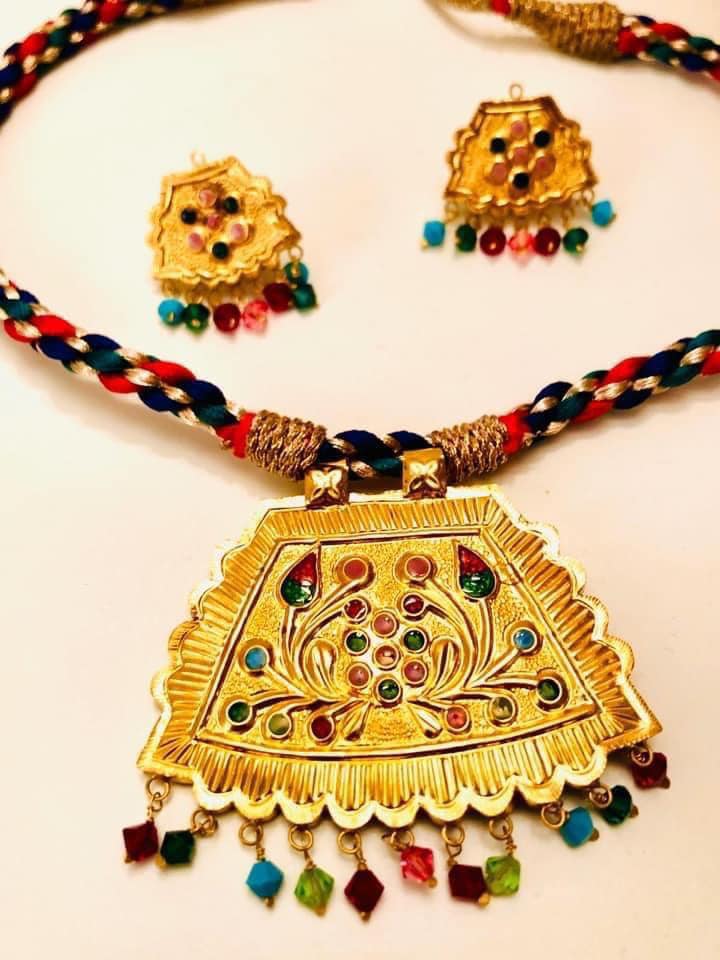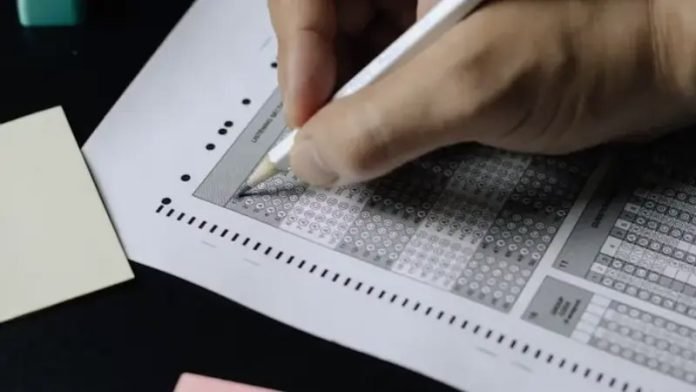The Naama set is a cherished Jewellery piece among the Dogra community, known for its deep cultural significance and its role in traditional Dogri weddings. Often worn by Dogri brides, this stunning accessory embodies the rich heritage of the Dogras, offering a timeless blend of history, beauty, and spiritual protection. Historically, Naama sets were believed to shield wearers from negativity, featuring pendants with divine symbols to invoke blessings.
Evolution of Naama Sets: From Traditional to Modern Styles
Originally, traditional Naama sets included pendants with images of gods, goddesses, or local deities, symbolizing protection and devotion. These pendants were meticulously crafted with intricate designs, surrounded by a beautiful array of pearls, semi-precious stones, and resham threads, which held both aesthetic and spiritual appeal.
However, in recent years, Naama sets have evolved, combining traditional elements with contemporary styles. Today, Naama sets come in a wide range of designs, with pendants that feature floral patterns, geometric shapes, and even abstract art, catering to modern preferences while maintaining their Dogra heritage.
Unique Design Elements of Naama Sets
- Pendants as the Focal Point
The pendant remains the highlight of the Naama set. In the past, pendants with images of deities were prominent, as they were believed to bring blessings and protection. Modern Naama sets, however, offer a more diverse selection of pendants, with motifs that honor Dogra tradition yet appeal to broader tastes. - Stringing Materials and Arrangements
Naama sets are traditionally strung using a mix of pearls, precious stones, and colored threads, especially resham, adding to their rich, elegant appearance. Today’s Naama sets use similar materials, but designers often experiment with various thread colors, bead sizes, and unique stone placements, creating a perfect fusion of classic and contemporary aesthetics. - Symbolism in Design
Beyond aesthetic appeal, Naama sets carry symbolic meanings. The traditional deity pendants represented the wearer’s devotion and desire for protection, and modern designs often retain symbols of cultural identity. For many Dogri brides, wearing a Naama set is more than just a style choice—it’s a tribute to their heritage.

Why Naama Sets Remain Popular in Dogra Weddings
The Naama set holds a special place in Dogri weddings. It symbolizes the continuity of traditions passed down through generations, connecting each bride to her ancestors. By wearing a Naama set, Dogri brides honor their cultural roots, while embracing the elegance of modern jewelry design.
The adaptability of Naama sets to contemporary fashion trends also contributes to their ongoing popularity. They’re no longer confined to traditional outfits; today, Naama sets can be styled with modern attire, making them suitable for both festive and formal occasions. This versatility allows brides to celebrate their culture while embracing personal style.
Finding the Perfect Naama Set
When searching for an ideal Naama set, consider:
- Authentic Craftsmanship: Seek out artisans who specialize in traditional Dogra jewelry, as they understand the significance and design intricacies of the Naama set.
- Design Choice: From deity-inspired pendants to minimalist modern designs, choose a style that resonates with your personal taste and cultural connection.
- Material and Quality: Ensure the set is made from high-quality materials—genuine pearls, precious stones, and durable threads are essential for both beauty and longevity.
Read also: Dogra Traditional Dress for Men and Women
The Legacy of Naama Sets in Dogra Culture
The Naama set is more than just an accessory; it’s a representation of the Dogra identity. Its endurance as a popular choice for Dogri brides shows the timeless appeal of combining heritage with modern elegance. Each Naama set tells a story, not just of the bride wearing it, but of generations past and the artistry that has evolved to keep the tradition alive. As Naama sets continue to evolve, they stand as a beautiful symbol of the Dogra community’s cultural pride and artistic legacy.
By embracing both the traditional and the contemporary, Naama sets are a powerful testament to how heritage can flourish and adapt over time.



















